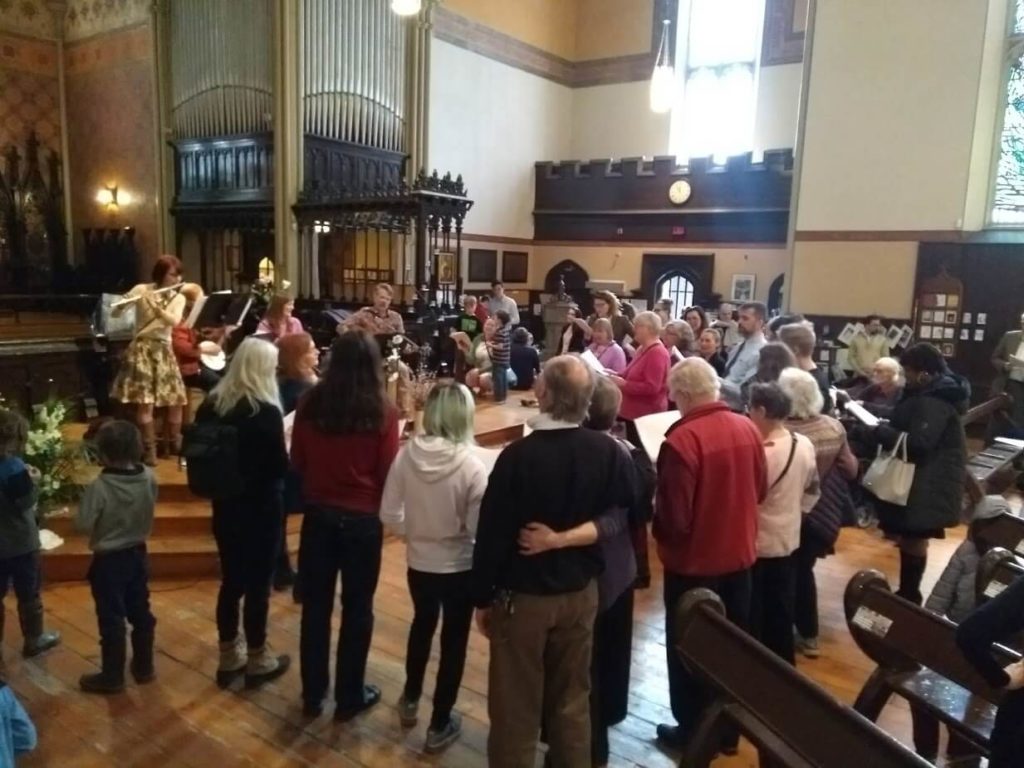Following are some key messages looking towards our future that include both challenges and opportunities and the tensions between them. These are not questions with simple answers, but conversations around which we can shape our future.
We Are Bigger Than We Look: cultivating and nurturing leadership
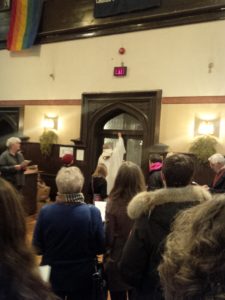
The community of the Church of the Holy Trinity (HT) is bigger than it looks on Sunday morning (30 – 50 people on an average Sunday). In addition to the many folks who are just passing through on a daily basis, there are hundreds of people that pass through the church each week. There are many folks who live on the street, or are poorly housed nearby, who spend a significant amount of time here. There are people who actively participate on HT committees who do not attend worship. There are regular community groups who use this space.

We have a large e-mail list of supporters and friends who join in conversation as well as ‘alums’ around the world who still identify as HT members. There are also many folks who have participated in one way or another over the years who still feel an affinity to Holy Trinity and have an interest in our future, without an active presence. Many people don’t seek traditional membership here that comes with regular giving and volunteer service.
Our key day to day leadership pool is shrinking while the aging building and ongoing demands of keeping the doors open are only increasing. Our willingness to risk and experiment has waned, but not disappeared. We are bigger than we look.
Challenges and Opportunities
- Leaning into and engaging the wider community of people who feel an affinity to HT.
- Creating many different ways of belonging that still work together as part of the whole.
- Finding the language and voice to speak with such a broad spectrum of community.
- Learning more about what kind of spiritual practices continue to resonate.
We have street cred: continuing to walk the talk
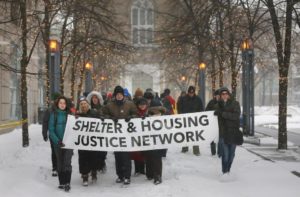
Holy Trinity has been an important light in the night sky of Toronto. We have a tradition of bearing witness to struggles for justice and moving our community into collective action. HT has a relatively well known story within both Toronto and the wider Anglican Church as a progressive and hospitable space with a strong community base. Resisting oppression is our ongoing work.

We have a history of “getting stuff done”: resisting the church being demolished for commercial development, securing space for affordable housing units, incubating Hospice Toronto, sponsoring more than 100 refugees, and more. An important part of our story is not only the work we have done, but the way we have done it. We have been willing to work outside the traditional models of church and have been open to a wide range of involvement – in worship, in community meetings and celebrations. In fact, Hospice Toronto has come full circle as they are presently seeking partnership with us around a hospice presence among the marginalized and downtown core.
Challenges and Opportunities
- Being on the edge takes energy and some of our folks are tired. The day to day needs can at times overwhelm the desire to innovate.
- Forming more strategic partnerships to get more things done in the future.
- Recognizing we don’t have all the answers or the experience, how can we engage with people’s/survivor’s movements in contemporary political struggles and not work from an old paradigm of ‘being the voice for others’.
- Growing our ministry/engagement with younger generations.
- Creating common cause and strengthening reliance with our global sisters and brothers who are struggling with the impact of growing global racism and xenophobic policies, a global refugee crisis fuelled by climate change and conflict, and an earth that is crying out for healing.
We fight for sunlight in the Square: nurturing spirit and well-being
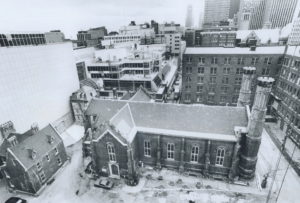
When the Eaton Centre development controversy threatened the continued future of the church, there was a fight not only to preserve the church and its ministry, but also to preserve the amount of sunlight in the Square and to protect some space from commercial development. Today’s downtown core is even more strained, more densely populated and more focused on commercial enterprise than community care. There is increased pressure on people to lead busier lives. Free spaces are being gobbled up and there are fewer places where people can be and congregate.
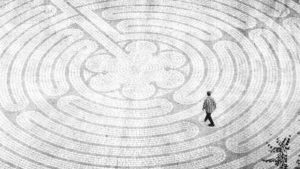
A very complicated form of street involvement has become centralized in our parish boundaries, marked by deep mental health disparity, advanced injection drug use, and wide distrust of social services. This part of our community, growing in numbers and need, requires more support in our space. Holy Trinity, Trinity Square and the labyrinth are even more important today as an oasis of space to nurture the spirit, available for anyone who passes by and as safer space for those who live on the streets.
Challenges and Opportunities
- Continuing to bear witness to gospel values of compassion and justice and speaking with courage in the growing crisis of urban poverty and homelessness.
- Meeting the needs of various communities at the same time; for example, how do we hold a respectful and safer space for worship and continue to be open to all who seek shelter?
- Connecting with people in these times about the meaningful things in their lives and in threshold moments.
- Building a pastoral presence in the wider community – what would it look like?
- Continuing to protect the sunlight in the Square, and the Square as a people-friendly place, as development pressures mount again.
We believe in hospitality and inclusion: widening the welcome
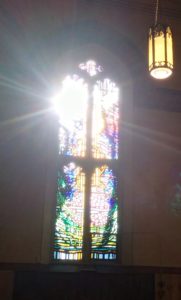
From our beginnings in The Ward neighbourhood, this community gathered the people who did not fit the profile of the dominant class. We have been home for folks from other denominations who have come in search of a new spiritual home. We have sheltered and stood with marginalized communities over the years. We have room for the doubters and foster an environment where questions are welcomed. We don’t presume to all believe the same things. We believe church communities have something to offer towards breaking down isolation and we recognize that churches have done much to exclude.
Challenges and Opportunities
- Holding space for important conversations, including the difficult ones.
- Growing common cause with people of faith and conscience and continuing to stay connected to our Anglican roots.
- Lifting up the voices of young people who see a world that is burning up and communities breaking down.
- Remaining faithful to continued learning in this practice.
Creative stewardship of our resources
As is true across the church, we are looking at opportunities to diversify our revenue and make more creative use of our space. We are open to new opportunities and community connections that draw both revenue and participation.
Challenges and Opportunities
- Practicing creative stewardship of all our resources.
- Finding new sources of income beyond members’ givings and trust funds.
- Learning to let go of what is no longer working.
In Conclusion – we’ve still got work to do!
The history of Holy Trinity has been marked by challenges that would have overtaken less committed groups. There have been fires, cracks through the walls, pressure from big corporations to leave, pressure from broader Christian society and our own church to let go of our mission and values. Truly we stand on the shoulders of giants, and we treasure the community that continues to be a source of compassion and justice. As a final note, we acknowledge that we are still working on it and still open to new ideas. We know there is more to come.
